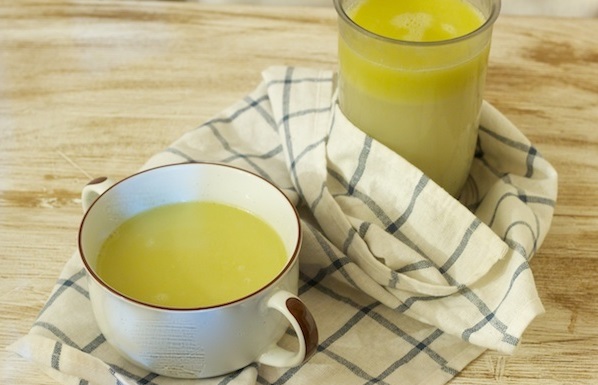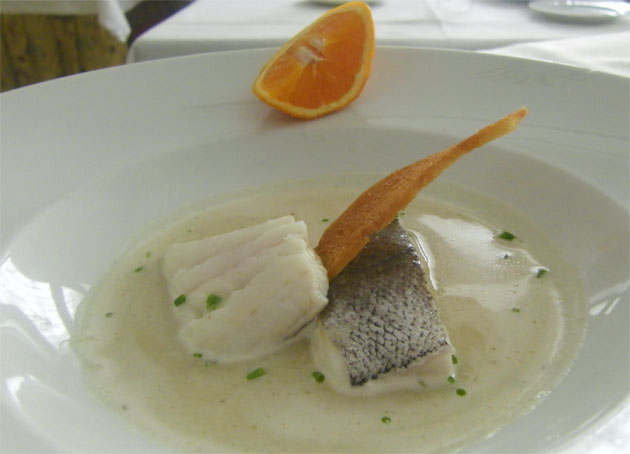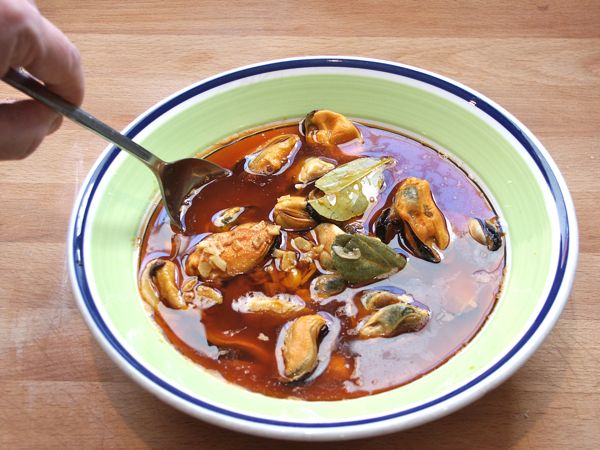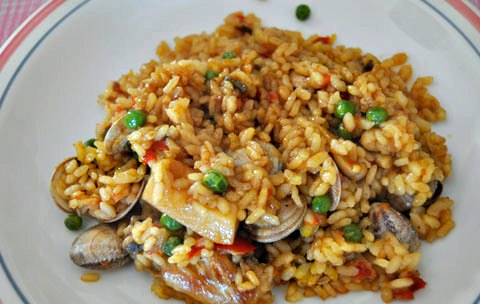Caldo de pescado
Fish Stock
The heads and central bones, or fish frames, of white fish, such as snapper, cod, hake, or bass, make a mild but tasty stock. Avoid what the Spanish call pescado azul, or “blue fish,” such as tuna, sardines, and salmon, among others, which are fatty fish and yield a strongly flavored stock that can overwhelm other foods.
Mussels are a good addition, as they impart a subtle flavor, and you can use the cooked mussels in another recipe, such as Mejillones en Escabeche. Never simmer the stock too long, or it will become too strongly flavored and bitter. A half hour will suffice.
- Makes about 2 quarts
Ingredients
- 2 pounds fish frames and heads (gills removed) from white fish (see recipe introduction)
- 1 cup shrimp shells
- 1 pound mussels, scrubbed and debearded
- 2 leeks, green tops only, coarsely chopped
- 1 yellow onion, halved
- 2 carrots, coarsely chopped
- 1 bunch flat-leaf parsley
- 2 quarts water
- Salt
Preparation
In a stockpot, combine the fish frames and heads, shrimp shells, mussels, leeks, onion, carrots, parsley, and water and bring to a gentle boil over high heat, using a slotted spoon to skim off any foam that forms on the surface. Decrease the heat to medium-low, cover partially, and simmer gently, skimming as needed, for 30 minutes.
Strain the stock through a fine-mesh sieve into a clean vessel. Retrieve the mussels from the sieve, discard their shells, and reserve the meats for another use. Season the stock to taste with salt. If storing for later use, prepare an ice bath in your sink, pour the stock into a tall container, and place it in the ice water to cool quickly. Stir the stock periodically to help reduce the cooling time, minimizing the opportunity for bacteria to grow.
When the stock is at room temperature, cover and refrigerate for up to 3 days or freeze for up to 6 months.
You may be also interested in...
See also
Caldillo de perro: The touch of bitter orange gives this fish soup an original flavor. Outside Andalusia, it is unusual to find bitter orange in any recipe, mainly because the trees are planted primarily in this part of Spain.
Mejillones en escabeche: En escabeche is a traditional method of preserving foods that was frequently used before refrigeration. Castilla– La Mancha is known for its superb escabeches, of which this is just one good example. The mussels will keep in the refrigerator for up to a week.
Arroz con Cebolla Confitada: Catalans like to mix seafood and meats, which they call mar y montaña (sea and mountain), and this dish, a specialty of the Bajo Ampurdán area, in Girona Province north of Barcelona, is an excellent example of that tradition. I first tasted it at Can Pep, a restaurant in the beautiful beach town of Calella de Palafrugell, and was immediately smitten. Like many other rice dishes from around the Mediterranean, this one is prepared in a cazuela, rather than in a paella pan.






